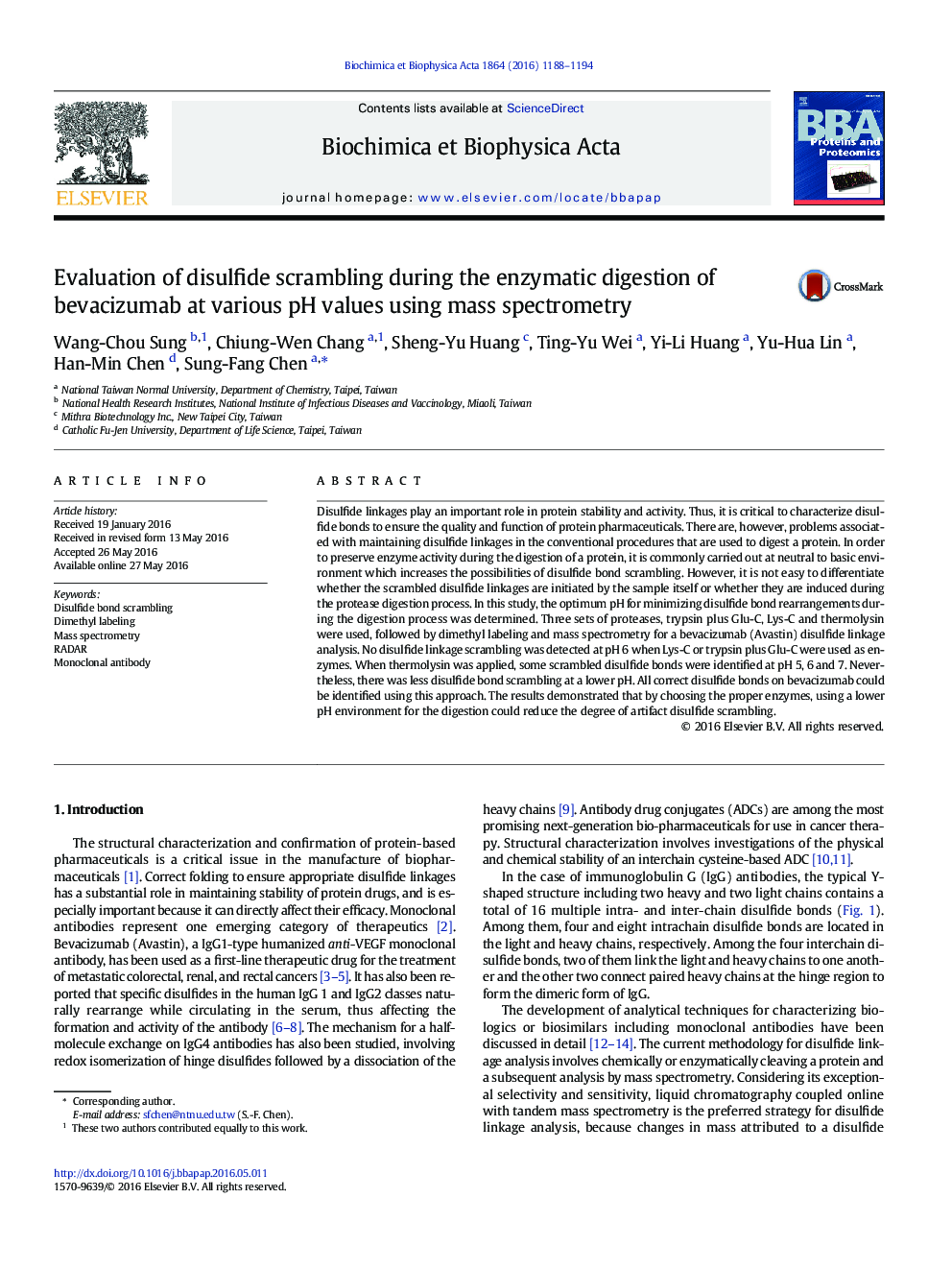| Article ID | Journal | Published Year | Pages | File Type |
|---|---|---|---|---|
| 1178056 | Biochimica et Biophysica Acta (BBA) - Proteins and Proteomics | 2016 | 7 Pages |
•This study investigated the specific protease combinations at controlled pHs for preventing disulfide scrambling artifacts.•The novel RADAR approach has successfully applied in this study.•This information will be very helpful for the disulfide linkage analysis of protein pharmaceuticals.
Disulfide linkages play an important role in protein stability and activity. Thus, it is critical to characterize disulfide bonds to ensure the quality and function of protein pharmaceuticals. There are, however, problems associated with maintaining disulfide linkages in the conventional procedures that are used to digest a protein. In order to preserve enzyme activity during the digestion of a protein, it is commonly carried out at neutral to basic environment which increases the possibilities of disulfide bond scrambling. However, it is not easy to differentiate whether the scrambled disulfide linkages are initiated by the sample itself or whether they are induced during the protease digestion process. In this study, the optimum pH for minimizing disulfide bond rearrangements during the digestion process was determined. Three sets of proteases, trypsin plus Glu-C, Lys-C and thermolysin were used, followed by dimethyl labeling and mass spectrometry for a bevacizumab (Avastin) disulfide linkage analysis. No disulfide linkage scrambling was detected at pH 6 when Lys-C or trypsin plus Glu-C were used as enzymes. When thermolysin was applied, some scrambled disulfide bonds were identified at pH 5, 6 and 7. Nevertheless, there was less disulfide bond scrambling at a lower pH. All correct disulfide bonds on bevacizumab could be identified using this approach. The results demonstrated that by choosing the proper enzymes, using a lower pH environment for the digestion could reduce the degree of artifact disulfide scrambling.
